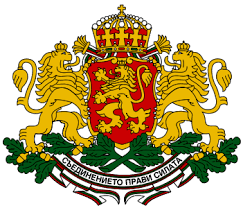| ___________________________________________________________

Situated in the south eastern Balkan peninsular, Bulgaria has been dealt a generous hand by nature. There is the impressive 230-mile long Black Sea Coast with some of the finest sandes beaches in Europe (and we've got the Blue Flag award to prove it) with average temperature of 27 C and more than 300 hours of sunshine in high season or the magnificent mountain ranges bursting with wild flora and fauna, and an amazing cultural heritage woth exploring. So whether you plan to let your hair down and be entertained in a modernseaside resort, relax and soak up the sun on a secluded beach where time stands hills or take a journey of discovery through a land of tradition and great contrasts - Bulgaria has it all.
History
The first Bulgarian state was established in 681. Trials and tribulations have marred the state's nearly 14 centuries existence which seems to have been almost entirely dedicated to long struggles for national freedom and independence. In its more recent history, Bulgaria has suffered longest (500 years) from the occupation of the Ottoman Turks empire. However, it is characteristic of this period of domination that the Bulgarians preserved almost intact their language, folklore, and cultural heritage and that if anything, the foreign domination has contributed to their awareness of other cultures and their tolerance of the very concept of 'otherness'. In most recent times, 50 years of Soviet domination in political life have left the country with the difficult task of restoring democratic principles in all walks of public life.
Traditions
A tradition which is very much alive to the present day is the one that makes everyone in Bulgaria, young and old alike, to wear 'martenitsa' from the 1 March on to the day they see the first swallow (nowadays, what with urban people seldom capable of recognising a swallow at all, martenitsi are pinned to the lapels for three or five days). 'Martenitsa' are white-and-red tassels, often complete with funny small figures of dolls, animals, etc. Bulgarians wear them for health, success and generally for good luck in the evolving year. Cattle and domestic animals and pets are also adorned; and the trees, especially fruit trees, bear the brunt of having them all year round as according to the custom when the five day period is over, the martenitsi should not be thrown away but should be put on a tree in leaves, and if possible in blossom. This symbolises the rebirth of nature and the general well-being in the coming days.
Culture
The roots of Bulgarian culture spread much deeper than even most Bulgarians might imagine. The country has always been an important cross-roads connecting Europe with Asia, and Northern Europe with the Mediterranean. It was home at one time or another to the Thracians, the Greeks and the Romans, and their cultural heritage has continued to live long after them, as has the cultural grandeur of Byzantium and the exotic charm of Muslim art. The wealth of this heritage makes cultural traditions of present-day Bulgaria a unique phenomenon in a land where East meets West, keeps its traditions are still very much alive. They live on in music, dance and crafts. They also live in some customs that are not really known in other countries.
Varna . Bulgaria . Phone: +359 898 536 606

.gif)
Обучение:_От А до Я в прогнозирането и търговията от дома

|




